| Listing 1 - 6 of 6 |
Sort by
|
Book
ISBN: 0444415661 Year: 1978 Publisher: Amsterdam : Elsevier,
Abstract | Keywords | Export | Availability | Bookmark
 Loading...
Loading...Choose an application
- Reference Manager
- EndNote
- RefWorks (Direct export to RefWorks)
Basalt --- Petrofabric analysis --- Pétrologie structurale --- Origin --- 551.21 --- 552.13 --- 552.132.2 --- 559.98 --- Fabric analysis (Petrology) --- Microtectonics --- Petrofabrics --- Petrology, Structural --- Petrotectonics --- Structural petrology --- Petrology --- Basaltic rocks --- Igneous rocks --- Basalt. --- Petrofabric analysis. --- Pétrologie structurale --- PETROLOGIE ROCHES IGNEES --- ROCHES IGNEES BASIQUES, ULTRA-BASIQUES
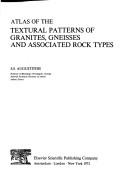
ISBN: 0444409777 9780444409775 Year: 1973 Publisher: Amsterdam : Elsevier,
Abstract | Keywords | Export | Availability | Bookmark
 Loading...
Loading...Choose an application
- Reference Manager
- EndNote
- RefWorks (Direct export to RefWorks)
Granite --- Gneiss --- Petrofabric analysis --- Pictorial works --- -Gneiss --- -Petrofabric analysis --- -Fabric analysis (Petrology) --- Microtectonics --- Petrofabrics --- Petrology, Structural --- Petrotectonics --- Structural petrology --- Petrology --- Gneuss --- Kneiss --- Metamorphic rocks --- Granitic rocks --- Igneous rocks --- Pictorial works. --- -Pictorial works --- Fabric analysis (Petrology) --- Roches ignées --- Granite - Pictorial works --- Gneiss - Pictorial works --- Petrofabric analysis - Pictorial works
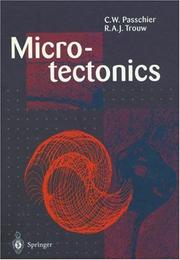
ISBN: 3540587136 3662087367 3662087340 9783540587132 Year: 1996 Publisher: Berlin : Springer,
Abstract | Keywords | Export | Availability | Bookmark
 Loading...
Loading...Choose an application
- Reference Manager
- EndNote
- RefWorks (Direct export to RefWorks)
Microtectonics is the interpretation of small-scale deformation structures in rocks. They are studied by optical microscope and contain abundant information on the history and type of deformation and metamorphism in a rock and are therefore used by most geologists to obtain data for large-scale geological interpretations. This advanced textbook contains a large number of photographs and explanatory drawings, special chapters on related techniques, a chapter on microgauges and a simple, non-mathematical treatment of continuum mechanics with practical examples. Special terms are explained in boxes. This textbook is suited for independent use during optical studies on microstructures as a reference manual and as a manual for short courses.
Petrofabric analysis --- Pétrologie structurale --- Petrofabric analysis. --- 551.244 --- Fabric analysis (Petrology) --- Microtectonics --- Petrofabrics --- Petrology, Structural --- Petrotectonics --- Structural petrology --- Uplift. Subsidence. Compression. Tension --- 551.244 Uplift. Subsidence. Compression. Tension --- Pétrologie structurale --- #Hist.Geol --- Petrology --- Geology. --- Mineralogy. --- Physical geology --- Crystallography --- Minerals --- Geognosy --- Geoscience --- Earth sciences --- Natural history --- Thin sections (Geology) --- Texture (pétrologie) --- Pétrologie structurale. --- Microtectonique.
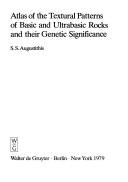
ISBN: 311086746X 9783110867466 3110065711 9783110065718 Year: 1979 Publisher: Berlin ; New York : W. de Gruyter,
Abstract | Keywords | Export | Availability | Bookmark
 Loading...
Loading...Choose an application
- Reference Manager
- EndNote
- RefWorks (Direct export to RefWorks)
Ultrabasic rocks. --- Igneous rocks. --- Petrofabric analysis. --- Fabric analysis (Petrology) --- Microtectonics --- Petrofabrics --- Petrology, Structural --- Petrotectonics --- Structural petrology --- Petrology --- Eruptive rocks --- Igneous petrology --- Igneous rocks --- Petrology, Igneous --- Rocks, Eruptive --- Rocks, Igneous --- Rocks --- Rocks, Ultrabasic --- Ultramafic rocks --- Petrofabric analysis --- Roches ultrabasiques --- Roches ignées --- Pétrologie structurale
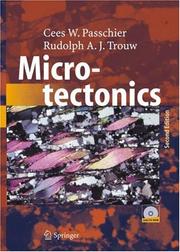
ISBN: 3540640037 3540293590 Year: 2005 Publisher: Berlin, Heidelberg : Springer Berlin Heidelberg : Imprint: Springer,
Abstract | Keywords | Export | Availability | Bookmark
 Loading...
Loading...Choose an application
- Reference Manager
- EndNote
- RefWorks (Direct export to RefWorks)
Microtectonics deals with the interpretation of microstructures, small-scale deformation structures in rocks that yield abundant information on the history and type of deformation and metamorphism. The results are used by geologists to obtain data for large-scale geological interpretations. This advanced textbook treats common microstructures such as foliations, porphyroblasts, veins, fringes and shear sense indicators. The book mainly focusses on optical microscopy as a tool to study microstructures, but also describes other techniques such as EBSD and tomography. Many photographs and explanatory drawings clarify the text. The new edition, substantially revised throughout and extended, features two new chapters (primary structures and experimental microstructures), 68 new figures, more than 800 new references. Microtectonics has proven useful for self study of microstructures and as a manual for short- and one-semester courses. Details of the changes in the second edition - Newest developments in microtectonics have been included in all chapters so that al chapters have been revised and updated, e.g. new information on brittle microstructures Two new chapters have been added, on primary structures and experimental microstructures Chapters on veins, shear zones, natural microgauges experimental modelling techniques and alternative techniques have been completely renewed over 800 new references have been added.
Petrofabric analysis. --- Pétrologie structurale --- Petrofabric analysis --- Dynamic & Structural Geology --- Petrology --- Geology --- Earth & Environmental Sciences --- Pétrologie structurale --- EPUB-LIV-FT LIVTERRE SPRINGER-B --- Fabric analysis (Petrology) --- Microtectonics --- Petrofabrics --- Petrology, Structural --- Petrotectonics --- Structural petrology --- Earth sciences. --- Structural geology. --- Mineralogy. --- Earth Sciences. --- Structural Geology. --- Earth Sciences, general. --- Geology, Structural. --- Geography. --- Cosmography --- Earth sciences --- World history --- Physical geology --- Crystallography --- Minerals --- Geotectonics --- Structural geology --- Tectonics (Geology) --- Geosciences --- Environmental sciences --- Physical sciences
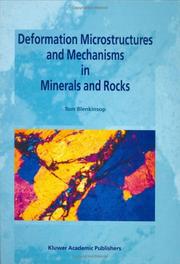
ISBN: 1280200308 9786610200306 030647543X 041273480X Year: 2000 Publisher: Dordrecht ; Boston : Kluwer Academic Publishers,
Abstract | Keywords | Export | Availability | Bookmark
 Loading...
Loading...Choose an application
- Reference Manager
- EndNote
- RefWorks (Direct export to RefWorks)
This book is a systematic guide to the recognition and interpretation of deformation microstructures and mechanisms in minerals and rocks at the scale of a thin section. Diagnostic features of microstructures and mechanisms are emphasized, and the subject is extensively illustrated with high-quality color and black and white photomicrographs, and many clear diagrams. After introducing three main classes of deformation microstructures and mechanisms, low- to high-grade deformation is presented in a logical sequence in Chapters 2 to 5. Magmatic/submagmatic deformation, shear sense indicators, and shock microstructures and metamorphism are described in Chapters 6 to 8, which are innovative chapters in a structural geology textbook. The final chapter shows how deformation microstructures and mechanisms can be used quantitatively to understand the behavior of the earth. Recent experimental research on failure criteria, frictional sliding laws, and flow laws is summarized in tables, and palaeopiezometry is discussed. Audience: This book is essential to all practising structural and tectonic geologists who use thin sections, and is an invaluable research tool for advanced undergraduates, postgraduates, lecturers and researchers in structural geology and tectonics.
Deformations (Mechanics). --- Microstructure. --- Petrofabric analysis. --- Rock deformation. --- Geology --- Earth & Environmental Sciences --- Petrology --- Deformations (Mechanics) --- 551.242 --- 551.242 Tectonic movements, fluctuations etc. Crust movements. Tectonic structures and their elements --- Tectonic movements, fluctuations etc. Crust movements. Tectonic structures and their elements --- Earth sciences. --- Structural geology. --- Mineral resources. --- Mineralogy. --- Earth Sciences. --- Structural Geology. --- Mineral Resources. --- Microstructure --- Petrofabric analysis --- Rock deformation --- Deformation, Rock --- Geology, Structural --- Fabric analysis (Petrology) --- Microtectonics --- Petrofabrics --- Petrology, Structural --- Petrotectonics --- Structural petrology --- Materials --- Matter --- Morphology --- Micromechanics --- Stereology --- Elastic solids --- Mechanics --- Rheology --- Strains and stresses --- Structural failures --- Constitution --- Geology, Structural. --- Geotectonics --- Structural geology --- Tectonics (Geology) --- Physical geology --- Deposits, Mineral --- Mineral deposits --- Mineral resources --- Mines and mining --- Mining --- Natural resources --- Geology, Economic --- Minerals --- Crystallography
| Listing 1 - 6 of 6 |
Sort by
|

 Search
Search Feedback
Feedback About UniCat
About UniCat  Help
Help News
News